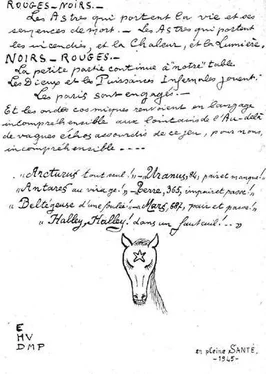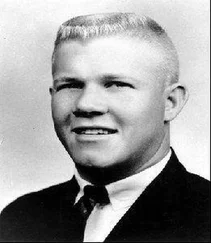Charges were typically assessed at various stages of the journey to freedom: an initial payment of 50,000 francs, an additional fee of 400 francs for each night in the organization hotel before departure, and another 90,000 francs for the false papers that were handed over at the railway station. (The fees, actually, differed depending on the person.) All the client’s money and jewels were entrusted to the escape organization for safekeeping until the client reached the Spanish border. The organization under scrutiny was believed to send its clients to Irun, a Basque border town in Gipuzkoa (Spanish: Guipúzcoa), and then farther by train, to a port in Portugal, where a neutral ship took them to South America. Clients arrived with diplomatic papers identifying them as commercial agents of the Republic of Argentina.
One Gestapo report summed up the organization: “The management of this underground railroad for the escape of persons from under German control must be assumed to be found or sought out among France’s leaders or upper classes.” It enjoyed the support of a foreign embassy, and the organization was, the report concluded, “remarkably efficient.”
TO secure the prisoner’s release from the concentration camp, Dreyfus’s wife Paulette was forced to pay a ransom, which included 100,000 francs just to open the dossier and a series of other fees to cover “unexpected costs” along the way that eventually surpassed 4 million francs. Yvan Dreyfus was then coerced into signing two important documents.
The first guaranteed that he would inform German authorities of all the information gained about the clandestine organization; the second required him to swear an oath that he would never act in any way against the Third Reich. Paulette Dreyfus, who had been led to believe that the ransom would purchase her husband’s unconditional freedom, was horrified. Guélin reassured her that it was a mere formality designed to satisfy Gestapo bureaucracy. He then asked for another 700,000 francs.
Yvan Dreyfus, a staunch patriot, was at the mercy of his captors. Signing the papers thrust in front of him by the men in brown leather jackets was the only way to leave the concentration camp. His cousins, moreover, were still held by the Germans, and his wife had been lured into Paris from Lyon to complete the negotiations. The German negotiators had made it clear to Dreyfus that any failure to cooperate would be construed as an act of hostility toward the Third Reich.
On April 9, 1943, Dreyfus signed the papers, and, shortly afterward, his wife paid the final installment of the fee at the Madeleine métro station. Dreyfus was released and the couple went to dinner to celebrate. Guélin also tagged along. On May 18, 1943, two Gestapo agents demanded that Dreyfus fulfill his end of the bargain.
By this time, Guélin had already made arrangements for Dreyfus to meet the purported leader of the escape organization, “Dr. Eugène.” He accompanied Dreyfus to the rendezvous, which was indeed a hairdresser’s salon on rue des Mathurins. Guélin described the evening:
We climbed a dirty, dark staircase, and passed through a succession of rooms in the hair salon, until we came to the one where Monsieur Fourrier was … Dreyfus asked him if he could obtain a passport for him, and Fourrier escorted him into a neighboring room, where in the shadow between the curtains, I saw a rather tall man who spoke with them
.
Dreyfus was informed that this was the first of several meetings because the organization needed to verify his credentials and evaluate his application. For the next interview, he was instructed to bring ten photographs for the false passports and papers: five full-face and five profile. He was also asked to pack his valuables in two suitcases. The fee was 200,000 francs.
After the background checks and the interviews, which were counted as numerous in the Gestapo report, though in reality there were probably no more than two or three, Dreyfus was selected to leave Paris on May 20, 1943. He was told to arrive at the salon on that day, and he would then be taken to a secret location to receive vaccinations and await departure. Gestapo agents planned to follow him, catching the members of the organization in the act of accepting payment. Once this was accomplished, one Gestapo report noted, they could search the headquarters, identify the people who furnished the false papers, and, of course, seize the organization’s assets, which were assumed to consist of “many millions of francs.”
At the appointed time, Dreyfus made the connection with Dr. Eugène, and the two men left the hair salon headed toward the Place de la Concorde. Somewhere on the Champs-Élysées, likely inside the métro station, they managed to elude the Gestapo agents and disappear. Dr. Eugène was evidently quick on his feet. Had Dreyfus, convinced of the doctor’s services to the Resistance, tipped him off about the trap?
Jodkum, furious at the failure, prepared to infiltrate the organization a second time. An agent quickly secured a meeting for four days later. But before that occurred, another German organization intervened.
UNBEKNOWNST to Jodkum, a separate subsection of the Gestapo had also been investigating the alleged escape organization. Parallel organizations with similar and indeed rival aims were notorious in the Third Reich, but this only partly explains the duplication. Jodkum had investigated the agency for its rumored assistance to Jews hoping to escape Occupied Paris. The second organization, suboffice IV E-3, which dealt with military security and counterintelligence, was concerned because of its alleged help to German soldiers who preferred to desert, rather than risk a transfer to the Eastern Front in the war against the Soviet Union.
The leader of IV E-3 was Hauptsturmführer Dr. Friedrich Berger. Like Jodkum, Berger had also recruited a mouton to infiltrate the group, Agent VM-X (V-Mann “X”), or Charles Beretta, a small man who looked more like a university professor than the hardened black market racketeer he was, who had been released from prison camp in 1940. Beretta worked as a tailor when he met Dr. Berger and, seduced by payment and privileges, began to cooperate with him. By January 1943, Beretta had been placed in charge of some lucrative purchasing agencies on behalf of the occupying power.
So while Jodkum’s team prepared for a second strike at the underground escape network, Berger sent Beretta into the hair salon, posing as a prisoner of war on temporary leave who feared being sent to a German work camp and wanted desperately to flee abroad. He also told Fourrier that his wife was held at Drancy and he wanted to raise enough money to buy her release. He pleaded for last-minute inclusion in the escape party.
After passing the series of interviews and background checks, Beretta was taken into a back room of the salon. Like Dreyfus, he handed over the ten photographs for his false papers. He saw his forged passport, or something purporting to be it—“the doctor showed it, but did not let me take it and study it closely,” he said. Beretta was asked to bring two suitcases and a blanket. He submitted a diagram showing a layout of the premises.
Although he had not learned the identity of the doctor, Beretta described him as a man approximately “thirty-five to thirty-eight years old, height about 175 cm [5′7″ to 5′8″], brown hair, thin, clean-shaven, wearing a navy blue and white striped suit. Nervous. He has the habit of rubbing his hands constantly.”
Beretta played the part of an aspiring fugitive, feigning financial distress and negotiating the fee of 100,000 francs down to 60,000. He paid an initial 10,000 and promised the last 50,000 the following day. When he showed up to complete the transaction, he handed over the first 45,000, all supplied by the Gestapo with serial numbers duly noted. He delivered the remaining 5,000 in a telephone booth outside Café de la Renaissance, near métro Strasbourg-Saint-Denis. At this point, the hairdresser said that Beretta would leave Paris in a party of eight. He claimed to have a list of names in a book in his pocket.
Читать дальше












